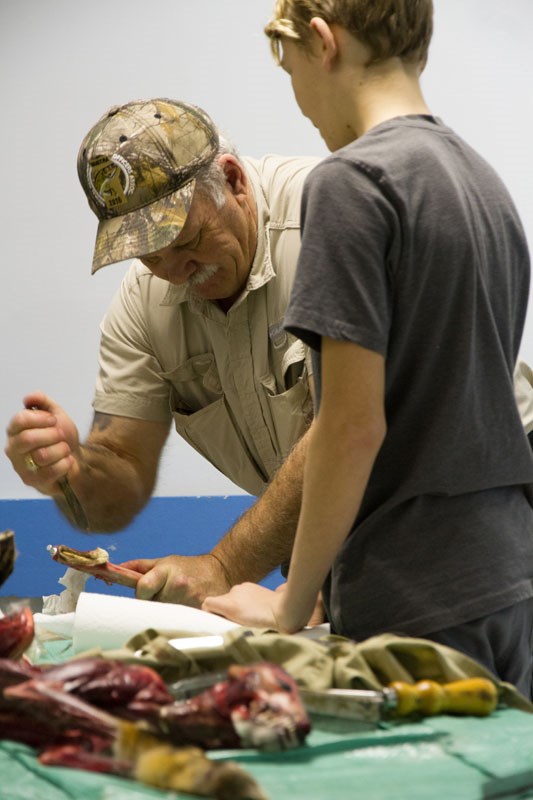As the smells of the Thompson fur tables rushed through St. Joseph’s open doors, I took a mental note for some future dinner: game meat and cinnamon.
The last two winters have been unkind to trappers throughout Manitoba. Once again, a perfect storm of market conditions, climate, and simple weather delays contributed to a reduced turnout and overall revenue for this year’s annual fur tables. Ninety-nine trappers gathered at St. Joseph’s between Dec. 16-17, selling $166,928 worth of fur, $151,080 of which came from marten.
It’s a paltry sum compared to the $400,000-600,000 that changed hands at the table only a few years ago, when fur prices were stellar and winter roads held firm under winter tires. Weather cancellations by Perimeter Air also caused prevented several trappers from making the journey south, and delayed dignitaries such as Churchill-Keewatinook Aski MP Niki Ashton and Manitoba Keewatinowi Okimakanak Grand Chief Sheila North Wilson. Manitoba Trappers’ Association president Lane Boles estimated that turnout may have approached 150 if weather had co-operated.
But for all of its challenges, the fur tables were at the very least a perfect scene: the -30C day outside gave way to the rich scents of game and warm furs, blended with wafts of coffee and pastries sold at the door (including, yes, cinnamon buns). In the corner, Boles and fellow trappers gave trapping and skinning demonstrations to roughly 200 elementary-aged kids throughout the weekend, teaching time-honoured history and modern tradition, while vendors sold trapping supplies and fur goods alike.
Among those demonstrating skills was Stanley Beardy, a lifelong trapper of 40 years, learning the craft from his father like many others there that day. Beardy shared a common feeling among his cohorts surrounding the current fur market, the feeling that the price of fur is secondary to the experience. “It’s a chance to be with your friends and family near Christmas, to talk amongst other trappers and share what works. For me, this is just the first half of the season: the best fur is yet to come.”
“This is where the real trappers stand out from those who jump on the bandwagon,” said Beardy. “When the prices go up, there’s many trappers. When the prices go low, it’s the true trappers that stay.” And a true trapper Beardy is: “It means everything to me. I was born and raised on a trap line.”
That’s not to say that the numbers have gone unnoticed: Wayne Lavallee’s face dropped noticeably as a fur buyer handed his offer to the full-time Easterville trapper. But the seasoned trapper understood the new realities of the market, and took it in stride. “It’s hard work when you’re all alone trapping, so you want the best price. But if it’s a low price, I still sell my fur, and if it’s a high price, I’m happy.”
Not all trappers inherited the craft from their fathers, however. With Lavallee was his former apprentice, Russell Chartier; Chartier studied under Lavallee for five years before gaining his licence, and has been trapping solo for 15 years since. “It was always interesting to me, all of the furs, the different Jason White was among the buyers purchasing furs this weekend, as director of furs with the Northwest Company. Despite this year’s challenges, White notes that the quality of this year’s harvest has been better than expected. “With the warm fall that we’ve been having, we thought the skins would be a lot flatter than what has come across the table. Compared to previous years, it’s about the same.”
Despite the market, White is confident that trapping in Northern Manitoba isn’t going anywhere any time soon. “It’s nice to see a lot of young faces. Trapping is alive and well, and I look forward to be a part of it for years to come.”




